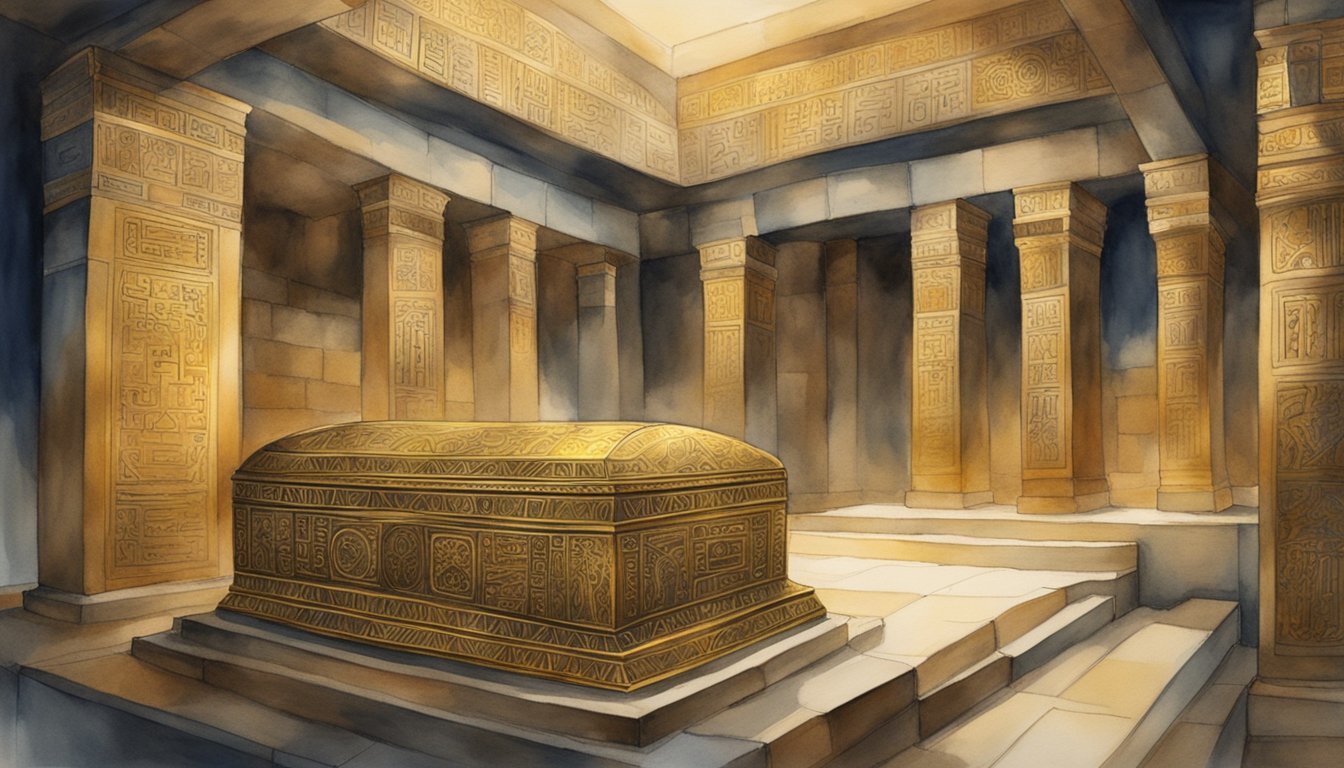King Tutankhamun’s Reign and Discovery
King Tutankhamun, commonly known as King Tut, was a pharaoh of ancient Egypt whose intact tomb and the treasures within it have captivated the world since their discovery. He reigned in a transformative period, returning ancient Egypt to its traditional religious practices after the Amarna Revolution.
Rise to Power and Family Background
King Tut was born Tutankhaten, a name reflecting the religious beliefs of his father, Pharaoh Akhenaten, who worshiped the sun disk Aten. Tutankhaten means “Living Image of Aten.” After Akhenaten’s death, the young pharaoh changed his name to Tutankhamun, “Living Image of Amun,” signifying a return to the worship of the god Amun. His family background is significant; he was likely the son of Akhenaten and his mother, identified through DNA testing, is known as The Younger Lady.
Reign and Religious Impact
Ascending to the throne at about nine years old, Tutankhamun’s reign lasted approximately a decade, circa 1332–1323 BCE, in the latter part of the 18th Dynasty. His advisors, notably including Ay and General Horemheb, played significant roles during his reign, due to his young age. One of King Tut’s major contributions was the reversal of his father’s religious reforms, also known as the Amarna Revolution, reinstating the traditional pantheon of gods and moving the religious center back from Amarna to Thebes.
Discovery of King Tut’s Tomb
In 1922, Howard Carter discovered Tutankhamun’s tomb in the Valley of the Kings, sparking a global fascination with ancient Egypt. The discovery was patronized by the English Lord, George Herbert, 5th Earl of Carnarvon. The near-intact state of the tomb provided unprecedented insights into the burial practices of the New Kingdom of Egypt.
Artifacts and Treasures
The tomb held a remarkable collection of treasures, which included over 5,000 objects. These ranged from a stunning golden burial mask to chariots, thrones, and even Tutankhamun’s mummy. These items are considered some of the most significant findings in the field of Egyptology. The Grand Egyptian Museum in Cairo is now home to many of these artifacts, offering a treasure trove for those interested in the life and times of the young pharaoh.
Mysteries and Legacies Surrounding Tutankhamun

King Tutankhamun, often referred to as the ‘boy king‘, has been the subject of intrigue and speculation since the discovery of his almost intact tomb in 1922. The precise circumstances surrounding his death, the evident signs of his physical ailments, the enduring legacy of his reign, and the myths that have sprung from his burial have all contributed to the enigmatic aura that surrounds one of Egypt’s youngest pharaohs.
Death and Theories
Theories about Tutankhamun’s death are numerous, with speculations ranging from murder to an accidental chariot accident. CT scans and X-rays have shown a fracture in his left leg, possibly leading to a fatal infection. No definitive evidence of assassination exists, but the debate continues among historians.
Physical Condition and Health
Scientific examinations, including DNA tests, have painted a picture of a pharaoh who may have had malaria and a bone disease. This is further supported by the numerous walking sticks found in his tomb, possibly indicating physical challenges, such as a clubfoot. The exact state of his health remains a topic of ongoing research.
Tutankhamun’s Legacy
Tutankhamun’s reign was short but left a considerable legacy, including restoration of the traditional Egyptian polytheistic beliefs after the upheaval caused by his possible predecessor, Akhenaten. The wealth of the artifacts found in his tomb underscores the opulence of the boy king’s era in the 18th Dynasty.
The Pharaoh’s Curse and Pop Culture
Since Howard Carter’s discovery, the supposed ‘curse of the pharaohs’ has fueled popular imagination, with claims that those who entered the tomb met with misfortune. However, these stories are largely deemed mythical. Even so, King Tutankhamun’s life and mysterious death continue to captivate and appear across various forms of pop culture, including literature, film, and television.

